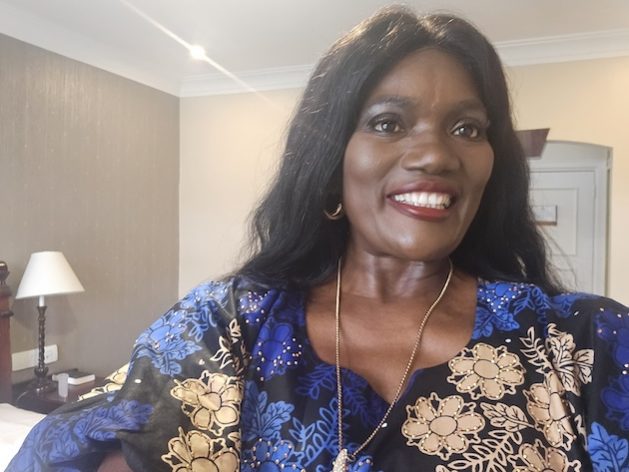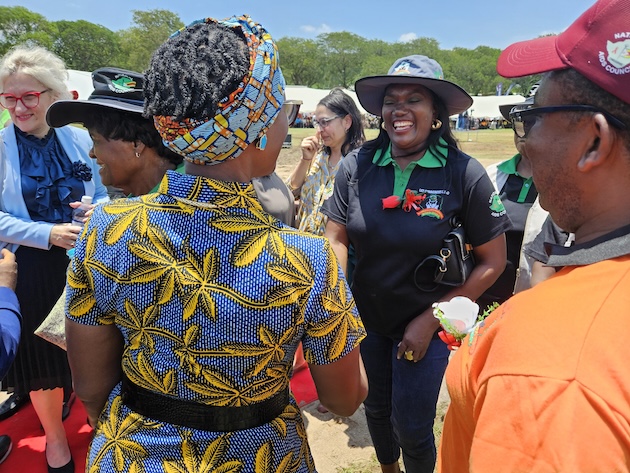Women, Girls Equal Partners in HIV Responses, Says Activist

BRATISLAVA, Feb 14 (IPS) - UNAIDS Executive Director, Winnie Byanyima, recently made an impassioned call for governments to support women and girls from marginalized communities at the frontlines of the defence of human rights, to help ensure, among others, that global health is protected.
This comes as the latest data from UNAIDS shows that:
- Globally, 46% of all new HIV infections were among women and girls in 2022
- In sub-Saharan Africa, adolescent girls and young women (AGYW) accounted for more than 77% of new infections among young people aged 15–24 years in 2022.
- In sub-Saharan Africa, adolescent girls and young women (aged 15–24 years) were more than three times as likely to acquire HIV than their male peers in 2022.
- Every week, 4000 adolescent girls and young women aged 15–24 years became infected with HIV globally in 2022, with 3100 of these infections occurring in sub-Saharan Africa.
- Only about 42% of districts with high HIV incidence in sub-Saharan Africa had dedicated HIV prevention programmes for adolescent girls and young women in 2021.
Tendayi Westerhof, national director of the PAN-African Positive Women’s Coalition Zimbabwe (PAPWC-ZIM), was one of the first celebrities in Zimbabwe to disclose their HIV-positive status and is one of the most prominent figures in the fight against HIV/AIDS in her country.

IPS spoke to the former model turned HIV activist about defending the rights of people living with HIV and the key role women and girls can play in the AIDS response.
IPS: Do you think that, globally, governments have failed to do enough to support women and girls from marginalized communities who are defending the rights of people living with HIV (PLHIV) and if so, why have they not done enough?
Westerhof: First and foremost is to understand what the rights of people living with HIV are and to ascertain if both women, girls and people living with HIV know their rights. The AIDS response must centre around human rights at every level. PLHIV have the right to treatment access for HIV, they too have sexual and reproductive health rights and are not a homogenous group. It is important to recognize that aspect of diversity among women, girls and PLHIV and ensure that their universal human rights are protected at country level. Laws that criminalize PLHIV and key populations fuel the spread of HIV and AIDS and continue to put the significant many in these groups at risk of HIV, and fuel stigma and discrimination.
IPS: What kind of support should governments or other international bodies be giving to women and girls in marginalised communities who are defending rights for PLHIV?
Westerhof: Women and girls in marginalized communities must be recognized as equal partners in the response to end AIDS and that they too have human rights. They need support in terms of inclusion in leadership and decision-making spaces and not tokenistic appointments. They need both technical and financial resources to effectively defend the rights of PLHIV.
IPS: From your experience as an HIV activist working with PLHIV, why do you think women and girls from marginalised communities specifically should be leading the fight to defend the rights of PLHIV?
Westerhof: I believe in the mantra ”nothing about us without us”. The Greater Involvement of People Living with HIV (GIPA) principles are clear in calling for the greater and meaningful involvement of people living with HIV in all our diversities. PLHIV are vectors of the disease but must be seen as equal partners who are bringing the realities of living with HIV to ensure that the planning, design, and implementation of HIV programmes are tailored to address their needs. They are also experts on various aspects especially peer support, issues of treatment literacy/adherence, HIV prevention and awareness, with the main focus being to address stigma and discrimination.
IPS: As someone living with HIV for a number of years, and an HIV activist, what have been the greatest challenges you have faced in trying to defend the rights of PLHIV?
Westerhof: My greatest challenge has been sometimes working in silos without a collective voice towards defending the rights of PLHIV. Also limited resources: most defenders are driven to do their work by the experiences they have been through, and by their passion, and end up working as unpaid volunteers. Getting burnt out and sometimes forgetting self-care and other mental health issues. The big issues of inequality, gender-based violence, in particular intimate partner violence, stigma and discrimination. There have been socio-economic challenges, but other challenges of funding and new emerging issues such as climate change, and disasters are shifting the focus from the fight against HIV and AIDS and resources keep dwindling. We are still recovering from the impact of COVID-19 and we need to continue empowering women and adolescent girls with information about HIV/AIDS and other pandemics.
IPS: Adolescent girls and young women (AGYW) have a disproportionate risk of acquiring HIV, compared to male peers, especially in Sub-Saharan Africa (SSA) for a number of reasons, including biological, socio-economic, religious, and cultural factors. Some experts have suggested these factors could be addressed through stricter sentences for sexual offenders, economically empowering AGYW, improving the provision of sexual and reproductive health and rights (SRHR) education and services to AGYW, and better access to HIV prevention and treatment. But do you think these measures would be enough to significantly reduce the disproportionate risk of acquiring HIV that AGYW face, especially in SSA countries?
Westerhof: A lot is happening in my country to address issues of gender-based violence (GBV), and in particular sexual violence. There is a need to keep bringing GBV matters into the spotlight through the media. Men’s/boys’ engagement in the response to end all forms of sexual violence must be intensified. Getting to boys at a younger age can help. Making use of our traditional and cultural leaders can also help to reduce GBV. AGYW still remain more vulnerable to HIV and AIDS and GBV than adult boys and young men (ABYM), and there is a need to continue with strategies that protect them.
IPS: Introducing any of the above measures, and ensuring their continued practical implementation would require the support of a number of state institutions, including not just judicial bodies, but health and economic institutions too. Do you have much confidence that these bodies and institutions would ensure that any laws passed, such as stricter sentences for sexual offenders, or guaranteeing better rights and access to HIV treatment for AGYW, would also be properly implemented in practice?
Westerhof: Most countries have these measures and law but the problem is operationalizing them. AGYW need continuous empowerment through these laws, and in how they can report cased of GBV. Victim-friendly courts are there, but sometimes they are not fully utilized. Perpetrators of GBV and sexual violence sometimes walk away scot-free in the absence of compelling evidence beyond reasonable doubt and other factors. Nevertheless, there are many perpetrators of GBV and sexual offences who are behind bars.
IPS: Stigma around HIV continues to play a significant role in fuelling epidemics as it puts many women off seeking treatment or accessing other services for fear their status may be disclosed. What should governments be doing to eliminate this stigma?
Westerhof: In my country the law prohibits stigma and discrimination of PLHIV, including women and AGYW. Also, a national study on stigma was conducted which provides guidance on how to plan, design and implement programs that aim to eliminate stigma and discrimination.
IPS: Do you think your own story as someone who publicly disclosed your HIV status despite the stigma around it at the time, your continued advocacy for PLHIV, and good health, is a good example for women and girls with HIV of the role they can play in helping to eliminate this stigma, and lead healthy, successful lives?
Westerhof: Disclosure helps to break the stigma and discrimination of HIV and AIDS. It encourages others to see that there is still life after a positive HIV test, as living with HIV is today a condition that can be managed with anti-retroviral therapy (ART). PLHIV have continued to play major roles in various communities, such as advocacy for better treatment, care, and support, community mobilization for HIV testing, cervical cancer screening, TB screening and others. Their testimonies have made it easier to make HIV and AIDS a normal subject and increase the acceptance of PLHIV. My public disclosure of my HIV+ status opened new doors for me.
IPS: You have previously spoken of how important it is that people in local communities are educated about HIV, its treatment and its prevention, and that everyone has access to that education and treatment and prevention services. But in communities where strong patriarchal attitudes are prevalent, and stigma around HIV is high, what measures can be taken to ensure women and girls get that education and access to services?
Westerhof: Community leaders can play a role to ensure that patriarchal attitudes are eliminated. This is an ongoing process whereby people’s attitudes are eventually changed through behaviour change.
IPS UN Bureau Report
Follow @IPSNewsUNBureau
Follow IPS News UN Bureau on Instagram
© Inter Press Service (2024) — All Rights Reserved. Original source: Inter Press Service
 Global Issues
Global Issues